![]()
Monday, May 22, 2017
First published by the Meir Amit Intelligence and Terrorism Information Center.
Analysis of the responses in the Arab and Muslim world

Cartoon published by the Egyptian daily Al-Masry Al-Youm, pointing to the contradictions in Hamas’s political document. The title above reads: “The new Hamas document.” Left: “Face that doesn’t recognize the 67’ borders.” Right: “Face that recognizes the 67’ borders” (Facebook page of Al-Masry Al-Youm, May 3, 2017)
On May 1, 2017, Hamas published a political document entitled “A Document of General Principles and Policies.” This political document was intended to update Hamas’s ideology and basic perceptions, as they appeared in the Hamas Charter from 1988, and adapt them to the strategic reality to today. An analysis of the sections of the political document clearly reveals that it did not introduce any significant change in Hamas’s principles and basic perceptions. But it does contain some changes, adaptations and additions that were intended to present a façade of innovation and adaptation of Hamas’s principles to the current reality.[1]
The changes and adaptations made by Hamas were primarily intended for political and media-related benefits in the internal Palestinian arena and in the Arab and Muslim world. These benefits were intended to help Hamas exit its current isolation and ease the pressure exerted on it. However, an analysis of the initial reactions in the Arab and Muslim world indicates that Hamas will find it difficult to achieve this goal. Most of the reactions in the media were characterized by suspicion and distrust while pointing out internal contradictions in the document.
On the other hand, there were commentators who claimed that it is an important document and considered it an expression of pragmatism and moderation of Hamas. The main points of this pragmatism and moderation, according to those commentators, are abandoning the religious ideology, turning Hamas into a Palestinian national liberation movement, advancing towards “national partnership” with Fatah and the Palestinian Authority, and preparing the ground for integration into future political agreements. Some people noted positive sides of the document, but added that it wasn’t enough and called on Hamas to take an extra step and recognize Israel.
An unusual reaction came from Turkey, Hamas’s ally. Turkey’s President Erdoğan described the document as most important, expressing Hamas’s political vision, mainly the establishment of a Palestinian state within the 1967 borders, with Jerusalem as its capital.
Two main topics, one of them appeared in the political document, and the other was omitted from it, triggered many reactions:
- Conditional willingness to establish a Palestinian state within the 1967 borders: Some people pointed out the contradiction between this alleged willingness and the conditions accompanying it (the “right of return” or the recognition of Israel). There were people who wondered how this willingness is reconciled with the “way of resistance” (i.e., the way of terrorism). On the other hand, there were those who regarded that as a withdrawal from the adherence to “historic Palestine” and alignment with Arab consensus. The Fatah movement announced that the new document is consistent with the PLO position from 1988 and called on Hamas to apologize to Fatah for “thirty years of accusations of treason and apostasy.” An Egyptian commentator (Al-Ahram) called on the Palestinian people to apologize to Sadat, noting that after forty years of wasting time and missing opportunities, Hamas has realized that if it wished to extricate itself from its difficulties, it must return to the roots of Sadat’s peace initiative.
- The omission of Section 2 in the Hamas Charter, stipulating that Hamas is the Palestinian wing of the Muslim Brotherhood: Hamas’s interest in downplaying its relations with the Muslim Brotherhood was met with total distrust in Egypt. According to Egyptian commentators, Hamas’s document is a “political maneuver” and plays on words, and its disassociation with the Muslim Brotherhood movement is only a façade. Egyptian commentators further note that if the document is not accompanied by actions, undertakings and hard decisions, Egypt will regard it as worthless. On the other hand, Turkey’s President Erdoğan, talking with journalists, lavished praises on Hamas’s political document. He also noted that he opposed the description of the Muslim Brotherhood movement as a terrorist organization and added that he had presented this position of his to US presidents George Bush and Barack Obama.
Following are the main points of the initial reactions (a few days after the publication of the political document) examined in this study:
- The Palestinian arena
- Egypt
- Jordan
- Saudi Arabia
- Qatar
- Iran
- Turkey
Responses in the Palestinian arena
Overview
Hamas’s political document entailed reactions by Abu Mazen and senior Fatah and PLO officials. It also gave rise to a lively discourse in the Palestinian media. Abu Mazen attacked the document claiming that it is vague, fraught with internal contradictions, and perpetuates the internal Palestinian rift. Fatah officials claimed that the document belatedly proves that the Fatah and PLO policy was right, after thirty years of accusations of treason. Moreover, it was claimed that the document expresses Hamas’s intention “to obliterate the PLO” and that it is expected to intensify the internal Palestinian rift.
On the other hand, there were also commentators who praised the political document, which in their opinion expresses a tendency of change and an indication that Hamas is growing closer to the PLO. According to these commentators, Hamas has positioned itself as a movement which is far from extremism and disengaged from the Muslim Brotherhood movement. Some of the articles expressed the hope that Hamas would seize the opportunity allowed by the document to promote Palestinian national unity.
Responses of Abu Mazen, Fatah, and the PLO
Abu Mazen referred to the political document in brief. In an interview he granted to RT Channel in Arabic, he noted that the document is vague and fraught with contradictions. He further said that the content of the document is irrelevant in view of the rift that it perpetuates. According to Abu Mazen, the military option for the solution of the Palestinian-Israeli conflict has disappeared, and the peaceful solution is the only way to end it (RT Channel, May 8, 2017).
Fatah’s Revolutionary Council released an announcement saying that the document is an evident attempt by Hamas to position itself as an alternative to the PLO and the Palestinian national plan. In spite of all that, Fatah continues in all its forums to oppose the “occupation” and the settlements and to pursue the rights of the Palestinian prisoners (Dunya Al-Watan, May 4, 2017). In another announcement, the Fatah movement declared that the new document is consistent with the PLO position from 1988, and called on Hamas to apologize for “thirty years of accusations of treason and apostasy, which caused a devastating rift in the Palestinian street” (website of Fatah’s Fateh Media, May 2, 2017).
Several high-ranking officials in Fatah and the PLO referred to the document:
- According to Fatah Spokesman Osama Qawasmeh, Hamas’s agreement to establish a Palestinian state within the 1967 borders represents a wording of compromise and the implementation of international law, and it is consistent with the position announced by the Palestinian organizations in 1988 (Fatah website, May 2, 2017).
- Jibril Rajoub, member of Fatah’s Central Committee, expressed the hope that Hamas’s political document would serve as a basis for establishing Palestinian national unity. According to Rajoub, it is evident that the document expressed a change in Hamas and its modus operandi (Dunya Al-Watan, May 2, 2017).
- Ahmad Majdalani, member of the PLO Executive Committee, says that the political document indicates Hamas’s attempt to attain recognition by the West and accustom itself to the international and regional changes. According to Majdalani, some of the sections are vague and lend themselves to more than one interpretation. However, he points out that in this document, Hamas has grown much closer to the PLO plan in all matters related to the establishment of an independent Palestinian state within the 1967 borders and the use of the various means of struggle (quds.net, May 2, 2017).
Commentaries in the Palestinian media
In the Palestinian media, lively discourse took place on Hamas’s new political document. Following are selected comments:
- An editorial on the daily Al-Hayat Al-Jadida, the Palestinian Authority’s official organ,strongly criticizes Hamas and the document. According to the editorial, the document exposed the true policy of Hamas, whose objective is to obliterate the PLO. According to the editorial, Hamas has never been a “resistance movement” in the strict sense of the word and it has never made its mark on the Palestinian national struggle. The editorial notes that the document does not contain anything new in the political context, but it exposes the true policy of Hamas as a governmental project of the Muslim Brotherhood movement, whose only desire is to obliterate the PLO. The editorial asserts that the publication of the political document in the current timing was intended to sabotage Abu Mazen’s mission in Washington (May 3, 2017).
- Ashraf al-Ajrami, a political commentator and Fatah member,[2] notes that Hamas has taken an important step adopting a document consisting of political and ideological changes. However, the obvious question is why is it doing so now and what is the purpose of the change. Ajrami claims that Khaled Mash’al’s answers to this question were unclear. Is Hamas, in its moderation, seeking to win recognition, and in what direction? Is it in the direction of national consent and integration into the Palestinian national movement as part of the PLO and its national plan? Or in the direction of recognizing Hamas as an alternative representative instead of the PLO or in parallel to it, and as the leader of the independent entity of Gaza? (Al-Ayyam, May 3, 2017)
- In another article, also in the daily Al-Ayyam, Ajrami writes that if Hamas employs its document in the direction of national unity, on the basis of the national consent plan, this will be a step in the right direction. This is because it will realize a paramount national interest and also protect Hamas and guarantee it a major stake in the legitimate political leadership that enjoys recognition worldwide, including in the Arab world. Any other way that Hamas chooses is an adventure fraught with danger that will probably harm Hamas (Al-Ayyam, May 10, 2017).
- Talal Awkal, a journalist and political commentator from Gaza, wrote an article entitled “Hamas’s document and its leadership under scrutiny.” In the article, he writes that Hamas’s list of priorities and the change that it seeks to present through the new political document and its new leadership should start from within. If Hamas is really committed to what has been published in the document in all matters related to partnership, pluralism, dialogue and acceptance of the other, then it should rectify its relations with the national forces and the powerful elements in the Palestinian society. Hamas should present models that are different from that of the autocracy which is currently prevailing there (Al-Ayyam, May 8, 2017).
- Dr. Fahmi Sharab, a journalist and political commentator from Gaza, published an article on the Fatah-affiliated Amad website. He claims that the new political document will have far-reaching repercussions. According to him, the document allows various elements to establish overt political relations with the movement. In his assessment, in the document, Hamas positioned itself as a movement far from extremism and terrorism. By doing that, it allowed itself to enter fields which have so far been the sole territory of the PLO. Furthermore, he added that the document actually reflects Hamas’s organizational and political disassociation from the Muslim Brotherhood movement, thereby complying with the Egyptian demand. Following that, Hamas will also strengthen its status in the eyes of the Gulf States. According to him, the document also helps eliminate puzzlement sensed by countries such as Turkey and Qatar and bring about their renewed assistance to Hamas (Amad, May 3, 2017).
- Rassem Obeidat, reporter and political commentator residing in east Jerusalem, writes in the independent daily Al-Quds that the content of the document is similar to what Yasser Arafat said on the armed struggle and the ban on giving up any part of Palestinian soil. According to Obeidat, in both cases, the change of opinion stemmed from economic hardships. Obeidat says that Hamas’s document does not include concessions on Jerusalem, the issue of refugees, the armed struggle and Hamas’s principles. However, it is about united political strategy of a struggle based on steadfastness, national vision and national unity (Al-Quds, May 3, 2017).
Responses by the PIJ and the PFLP
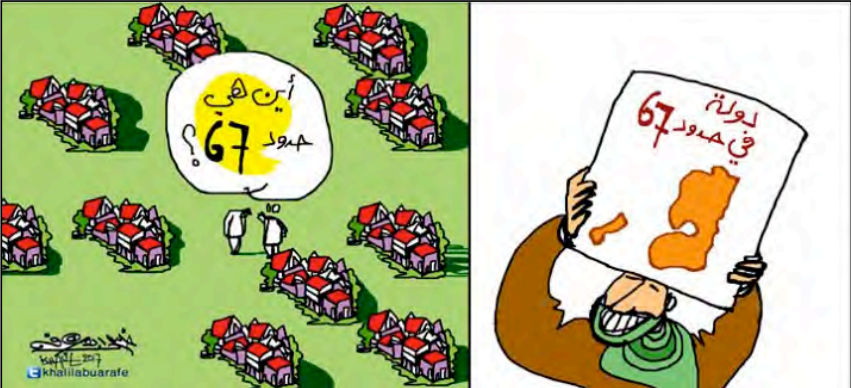
Cartoon mocking Hamas, published by the Palestinian cartoonist Khalil Abu Arfe, on Hamas’s acceptance of a Palestinian state within the 1967 borders, while those borders have been blurred due to the building in the settlements. Right: “A state within the 1967 borders”. Left: “Where are the 1967 borders?” (Facebook page of Khalil Abu Arfe, March 14, 2017)
The first reactions of figures affiliated with the Palestinian Islamic Jihad (PIJ) and the Popular Front for the Liberation of Palestine (PFLP) reflect concern and suspicion about the political document. The bulk of their criticism is directed at Hamas’s acceptance of a Palestinian state within the 1967 borders. They are also concerned that Hamas would be interested in political activity that will have an adverse effect on the “armed resistance” (i.e., the path of terrorism).
Ziad al-Nakhaleh, deputy secretary-general of the Palestinian Islamic Jihad (PIJ) notes that the document reflects an attempt to promote solutions under international sponsorship. However, Al-Nakhaleh adds that he is not satisfied with several things in the document. In contrast to declarations by Hamas operatives, the meaning of the wording in the new document is unequivocal recognition of a state within the 1967 borders. The PIJ agrees with some of the sections in the document, such as “the right of return” and the non-recognition of Israel. However, it does not praise Hamas for accepting a Palestinian state within the 1967 borders, because this runs counter to its principles and will lead to a dead end (Filastin Al-Youm, May 4, 2017).
Mohammad Jaber al-Rifi,publicist, member of the Popular Front for the Liberation of Palestine (PFLP), writes that for the first time in the history of the Arab-Israeli conflict, a large Islamic organization’s agreement to a temporary settlement with Israel goes public. This contradicts the prevailing Islamic ideology, according to which the land of Palestine is a Muslim endowment (waqf) which must not undergo any change. According to the writer, it seems that in the current political situation, Hamas began to show greater interest in political activity. Its political message started to be in line with the desire of the international community to reach a political settlement that would legitimize the “theft of Palestine.” According to the writer, the obvious question right now is where is the slogan of resistance, particularly the armed resistance, in view of this turning point? (PFLP website, May 7, 2017).
Responses in the Arab and Muslim world
Egypt
The Egyptian leadership so far refrained from direct reference to Hamas’s new document. However, a lively discourse surrounded the document in the Egyptian media. Most of the commentators in the Egyptian media harshly criticized the document, which was allegedly intended to bring Hamas closer to Egypt. According to many commentators, the document is actually a “political maneuver” and “play on words,” including words and their opposites, which were intended to satisfy friends and enemies alike. According to several articles, Hamas’s announcement on disassociating itself from the Muslim Brotherhood movement is only a façade. Furthermore, Egyptian commentators made it clear that if the document was not accompanied by actions, undertakings and hard decisions, some of which requiring courage and making concessions, Egypt would regard it as a worthless paper. However, there were also voices (albeit fewer) claiming that the document expresses a change in Hamas’s conduct regarding all matters pertaining to the conflict with Israel.
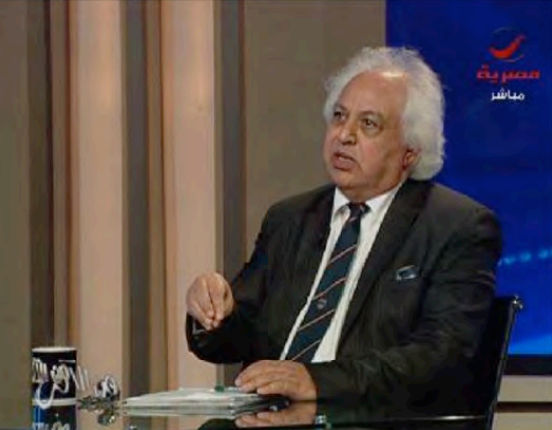
Dr. Samir Ghattas, an Egyptian MP considered an expert on the Palestinian issue (Facebook page of Dr. Samir Ghattas, April 3, 2014)
Following are examples of statements and articles published in the Egyptian media, attacking the document and referring with suspicion to Hamas’s motives:
- Dr. Samir Ghattas, an Egyptian member of parliament who is considered an expert on the Palestinian issue, does not see any significant change in Hamas’s main positions. According to Dr. Ghattas, if Hamas were serious in its intention to bring about significant changes in its positions, it would cancel its Charter or replace it with a new one. However, the Charter is actually still valid and it is possible to return to it. In his opinion, the document has been worded in consultation with the Muslim Brotherhood movement and with Egyptian thinkers close to Hamas. Samir Ghattas believes that even after the publication of the document, Egypt should continue regarding Hamas as a movement affiliated with the Muslim Brotherhood movement and be aware of the maneuvers made by Hamas through this document (Al-Watan, May 7, 2017).
- Hani Assal writes in Al-Ahram that Hamas’s document does not include a change in strategy or even in tactics. Thisis cosmetic treatment for a movement which started as a “resistance” movement and turned into a movement repudiated by its friends and opponents alike. According to him, in spite of the eloquent expressions used in the document, one should treat it with skepticism, caution and concern, in view of the fact that the document was created at a hotel in Doha, and not in Gaza or another Arab country; and in view of the fact that no conversation or any kind of discussion took place in Hamas or in Gaza about the document before it went public. He adds that if the document is not accompanied by actions, undertakings and hard decisions, some of them requiring courage and making concessions, Egypt would regard it as nothing more than a “worthless paper” (Al-Ahram, May 3, 2017).
- Mohammad al-Fadlwrote that the document is fraught with attempts to deceive and satisfy friends and opponents alike. According to Al-Fadl, many of the 42 sections of the document are characterized by duality: recognition of the 1967 borders, but no explicit recognition of Israel; stressing the importance of political activity while holding on to the weapon of “resistance”; failing to mention the affiliation of Hamas with the Muslim Brotherhood movement, yet adhering to the ideological framework of the Muslim Brotherhood movement. According to Al-Fadl, these are political maneuvers and plays on words that were intended to make sure that any party will find in the document what it wishes (Al-Ahram, May 4, 2017).
- Karim Abdel Salam writes that Hamas adopts in its new document the principle of political pragmatism in order to avoid being pronounced a terror organization and to obtain for itself possible presence in any future negotiations with Israel under US sponsorship. He says the document is fraught with question marks. It does not provide answers to questions such as: What is Hamas’s position regarding the terrorism in Sinai? To what extent is it responsible to and capable of controlling terrorists in the Gaza Strip? What is the extent of Hamas’s cooperation with the Egyptian authorities to secure the full control of the border with the Gaza Strip? (Al-Youm Al-Sabea, May 4, 2017).
- According to Morsi Atallah, if he were a Palestinian citizen, he would now call on the Palestinian people to apologize to President Sadat. The reason is that the document published by Khaled Mash’al is far less than what President Sadat offered as part of his peace initiative in 1977. According to Atallah, the Hamas movement understood after forty years of time wasting and missed opportunities that extricating itself from the problematic situation requires returning to the roots of Sadat’s peace initiative. This was done after the Palestinian cause was almost lost completely following impotence and hesitation stemming from the ongoing policy of adherence to the demand to return everything [to the Palestinians] (Al-Ahram, May 4, 2017).
- Mahfuz al-Ansarimocks Hamas’s announcement that it has “taken off the hat of the Muslim Brotherhood.” He stresses that the game played by Hamas is nothing more than a “new trick,” intended to eliminate the PLO so that Hamas may take the reins of the Palestinian cause into its hands (Al-Gumhuriya, May 4, 2017).
- Khaled Imamclaims that the announcement by Hamas that it has renounced the Muslim Brotherhood movement is merely a façade designed for Hamas to impose itself as a key player in any future settlement. This is carried out by Hamas presenting itself as a moderate movement which implicitly recognizes Israel’s right to exist and turning a new leaf in the relations between Hamas and Egypt. He says the document is fraught with contradictions and includes contradictory statements. The document attempts to improve Hamas’s image in the eyes of the world and in the eyes of its neighbors, mainly Egypt. In reality, during the years in which the document was formulated, Hamas has continued to dig tunnels and use its territory for training the terrorists, the operatives of Ansar Bayt Al-Maqdis (i.e., ISIS’s Sinai Province) (Al-Massa, May 3, 2017).
- Dandarawi al-Hawari writes that as a matter of fact, Hamas did not announce in the new document that it renounces the Muslim Brotherhood movement, as the Muslim Brotherhood movement is not mentioned in the document at all, and the matter remains vague. As he claims, by this document, Hamas has planted the seeds of establishing the State of Gaza side by side with the State of Israel and the State of Ramallah on the Palestinian lands, in such a manner that the name of Palestine will no longer exist (Al-Youm Al-Sabea, May 3, 2017).
That said, among the writers there were also voices (albeit relatively few) who were in favor of the document. These voices claimed that it expresses a real change that occurred in Hamas’s way, in a way that will allow it to cope with the changes in the region and settle its relations with the world. Following are several examples:
- Khaled al-Asmai writes that Hamas’s document was not a political maneuver but stemmed from a need (implying a real need). This is in view of the changes that occurred on the ground, which necessitate a wider horizon and a more flexible policy. According to Al-Asmai, in its new document, Hamas withdraws its explicit call for the elimination of Israel, at the same time with the emphasis that Hamas does not harbor animosity to the Jews. This astounding progress in Hamas’s way of thinking blocked the way for Israel’s attempts to attribute a religious nature to the conflict. Another important issue is the pragmatic approach in which Hamas describes itself. The message inherent to this approach is that Hamas will be party to any future negotiations (Al-Ahram, May 7, 2017).
- Abdel Nasser Salameh calls the document a “historic document.” According to the article, the document includes a withdrawal from the adherence to the land of “historic Palestine” for the establishment of a Palestinian state within the 1967 borders, in a manner that is in line with the Arab consensus. He says that within Egypt, there is satisfaction with the document (Al-Masry Al-Youm, May 5, 2017).
- Farouq Juweida praises Hamas’s return to the Palestinian camp and its announcement on its historic disassociation with the Muslim Brotherhood movement. Thisis carried out, as he says, after Hamas has lost a great deal due to [its affiliation with] the movement (Al-Ahram, May 3, 2017).
- Abdallah al-Sinawi emphasizes that in the new document, Hamas tried, through vague statement, to combine its political heritage with the new realism. According to Al-Sinawi, the document represents an attempt to mitigate the international and regional pressure exerted on Hamas and bring about a recognition of Hamas as a Palestinian player in future political moves. He claims that more than distancing Hamas from the Muslim Brotherhood movement, the document expresses Hamas’s compliance with the need to act with openness towards many regional and international power centers, including Egypt (Al-Shorouq, May 4, 2017).
- Jihan Fawzi wrote an article entitled “the new era document.” Fawzi stresses that the new document expresses a change that occurred in Hamas’s way and ideology thirty years after the formulation of the first Charter. According to Fawzi, the document will allow Hamas to deal with the changes in the region and settle its relations with the world. She notes that the changes included in the document were intended to improve the movement’s relations with Egypt, Saudi Arabia and UAE, and maybe also with the Western countries, which regard Hamas as a terrorist organization. At the same time, the document allows Hamas to keep its influence in and control of the Gaza Strip (Al-Watan, May 4, 2017).
Jordan
The Jordanian leadership so far refrained from directly addressing Hamas’s political document. The reactions of the Jordanian media to the document were mixed: There were commentators who pointed out the radical nature of the document, that will make it easy for Israel to assert that a Palestinian state within the 1967 borders is nothing but an interim stage on the way to “liberate Palestine” from the [Mediterranean] Sea to the [Jordan] River.Some of the commentators pointed out that the statements in the document are vague, and that Hamas would have to work hard in order to convince the world that the movement had changed. On the other hand, other commentators pointed out major changes expressed by the document: relinquishing the religious ideology; turning Hamas into a Palestinian national liberation movement; major progress in Hamas’s position towards pluralism and the national Palestinian partnership; and preparing the ground for the integration of Hamas into future political settlements.
Following are several references attacking Hamas’s document or referring to it with suspicion:
- Fahed al-Fanek writes that “there is nothing new under the sun.” According to him, the acceptance of the 1967 borders is the message directed to the international community and Israel. However, the message directed to the Palestinian and Arab citizen is that not an inch of the land of Palestine should be given up, regardless of the circumstances and how long the occupation will last. Hamas rejects any other alternative save the liberation of all Palestine from the Sea to the River, and therefore Israel will use the document to prove its allegation that a Palestinian state within the 1967 borders is nothing but an interim phase on the way to obliterate the State of Israel (Al-Rai, May 4, 2017).
- Fahed al-Khaitan writes that Khaled Mash’al is one of the Hamas leaders with a long-term vision. In recent years, he realized that his movement was in a severe crisis threatening its existence and functioning. However, the disassociation with the Muslim Brotherhood movement and turning Hamas into a national liberation movement are not enough to convince the world that the movement has changed. Therefore, Hamas had to get closer to the red line, which was expressed in its position toward Israel. The acceptance of a state within the 1967 borders means indirect recognition of a reality existing in the other part of the land of historic Palestine. These are no doubt significant steps, but they came in a delay of at least four years (Al-Ghad, May 3, 2017).
- Ibrahim Gharayba writes that Hamas’s document is nothing but a recognition of a reality that we all know, as the “resistance” actually ended in 1948, and everything governments and organizations have done since then was no more than an attempt to return to the days before 1967. According to him, along the fifty years that have passed since the June defeat, the Palestinian people hasn’t achieved anything but extra losses. This was, as he claims, because of the very clear and simple reason that there was the military and organizational gap between both sides of the conflict, and all the attempts and the efforts to resist were no more than a Quixotic struggle against windmills (Al-Hayat, May 4, 2017).
- Aribal-Rantawi claimed that the objective of the new document is to legitimize Hamas as a governance body instead of the Palestinian Authority or side by side with it. Hamas could have been a project of “national liberation” without accepting a state within the 1967 borders, but it will find it difficult to be a governance project without it. From this point of view, Hamas repeats the mistake of Fatah, which turned into a governance movement and forgot that it was a liberation movement (Ad-Dustour, May 3, 2017).
- According to Mohammad Abu Rumman, the essence of the change can be summarized by one word, “politicization.” He says that the movement, whose Charter from the late 1980s was based on religious and ideological platform, defines itself anew as a Palestinian liberation movement. This is a significant, and even necessary, turnaround. The new document paved the way for politically accepting the movement in the regional as well as the international level, with an evasive position on the peaceful solution. But more important than that, it has taken a giant leap in its position towards democracy, pluralism and the national Palestinian partnership (Al-Ghad, May 3, 2017).
- Atef al-Julani writesthat the content of Hamas’s new document reflects its current political and media-related conduct rather than indicating a new era that prepares the ground for a policy change. In terms of timing, the movement chose a moment in which it is in a position of power to announce its political document, which increases its flexibility and maneuverability at the political level. According to Al-Julani, Hamas’s new and important document reflects rare courage, which cannot be found with other movements and political forces, which are afraid of making changes for fear of drawing criticism (Al-Sabil, May 7, 2017).
- According to Samih al-Muayta, the vague statements that lend themselves to several interpretations are the same method adopted by the Fatah movement thirty years earlier. He says that the purpose of the document is clear – paving the way to accept Hamas in the world. According to Al-Muayta, one must not forget that Hamas is part of a regional axis which includes Turkey and Qatar, two countries having overt and covert relations with Israel, both of them interested in obtaining sway over Hamas. Hamas leaders will have to wage an extensive campaign to convince the world that the movement has changed, but the price will be high (Ammon News Agency, May 2, 2017).
- Hussein al-Rawashda writes that the document was issued for two main reasons: The first, because Hamas could not afford to remain affiliated with the Muslim Brotherhood movement after that movement was included on the list of terrorist organizations in several Arab countries; The second, Hamas, as a Palestinian national movement operating in the political and military levels, wished to be released from its organizational commitment to political Islam.Hamas also wanted to send a message to the world that it can be an accepted party at the table of future political settlements (Ad-Dustour, May 4, 2017).
The Salafist-jihadi operative Sheikh Mohammad al-Maqdisi[3] wrote an article that was published in his Instagram account on May 3, 2017. In his article, he denounces the Hamas document, mainly the section that accepts the peace settlement on the basis of the 1967 borders. He notes that this means that Hamas has officially become a Palestinian national movement which agrees to defeatist solutions and recognizes the Jewish state. The article asserts that Hamas has cut itself off from jihad fighters. He foresees that Hamas’s defeatist concessions will bring about a rift mainly in Hamas’s military wing and cause Hamas to lose its attraction mainly among young people.
Saudi Arabia
The Saudi publicist Fahed Suleiman al-Shuqiran writes in the international (Saudi-owned) newspaper Al-Sharq Al-Awsat issued in London: Although Hamas has given up the goal of “destroying Israel,” the document turns to the “perpetration of the conflict” and elimination of all possibilities for solutions and ways to negotiation. Ever since the beginning of the Palestinian problem, Saudi Arabia has dedicated attention to finding solutions and come up with many initiatives. The ball is now in the court of the Palestinian politicians. Do the Palestinian politicians have [enough] seriousness to reach a solution to the problem? Or will the “perpetuation of the conflict” be the only option, causing only more killing and bloodshed? (Al-Sharq Al-Awsat, May 11, 2017)
Mutlaq bin Saud al-Mutairi writes that Hamas’s disassociation with the Muslim Brotherhood movement is puzzling: How did Hamas give up its identity and turned into a political entity? The writer arrives at the conclusion that the importance of the document lies in Hamas having much flexibility today to give up most of its previous basic principles. This is owing to the weakening of Hamas’s political influence in the Gaza Strip and due to the regional and international circumstances that are not in favor of Hamas. Therefore, Hamas believes that its legitimacy depends on recognizing its enemy as a possible partner for negotiation. In conclusion, he says that the importance of the document lies in Hamas’s aspiration to convince Israel that it is a partner for peace rather than an eternal enemy (Al-Riyadh, May 3, 2017).
Qatar
Abdallah bin Hamad al-Athba, the editor-in-chief of the newspaper Al-Arab, writes that there are those who were surprised of the level of realpolitik demonstrated by a political movement which is still portrayed as a “terror” movement and as an obstacle to peace in the region. According to him, the new document has placed not only Israel in a predicament, but also all of its regional partners to the siege on the Gaza Strip. He adds that in Qatar, they were not surprised by this realism. In this context, he mentions an interview granted to CNN by the Emir of Qatar in 2014, in which the emir said that Qatar disagrees with whoever regards Hamas as a terror organization. The writer praises the emir’s long-term vision of defending Hamas and its realism and supporting it. In conclusion, the writer says that Hamas’s document represents a model for all Islamic movements to become more realistic, understand the complex situation in the region, examine their own policies, and learn from the past in order to understand how to proceed to the future (Al-Arab, May 3, 2017).
Dr. Hassan Barari writes that the document has revealed that Hamas is willing to accept a Palestinian state within the borders of June 4, 1967. This willingness is a positive step for achieving Palestinian reconciliation and legitimizing Hamas as an acceptable player in the international arena. There are those who compare Hamas’s document to the change that occurred in the PLO plan during the 1970s, after its leaders arrived at the conclusion that the armed struggle had limits. However, one should acknowledge that the document may be related to the wish of Hamas leaders to guarantee their own as well as their organization’s political existence, having been left with no true allies. The Israeli and the international sides are well aware of the fact that the document, albeit containing positive indications, does not satisfy the goal, i.e., does not meet the terms of the Quartet. Hamas will not be able to establish a Palestinian state without reaching an understanding with Israel, and this brings into question the possibility that Hamas would agree to the terms of the Quartet. The document hasn’t come to that, but the forthcoming days may have a lot of surprises in store (Al-Sharq, May 5, 2017).
Iran
So far, the Iranian Ministry of Foreign Affairs hasn’t released an official response to Hamas’s new political document. The few comments by the regime and the conservative camp in Iran, as well as the media affiliated with them, convey disappointment at Hamas’s withdrawal from its policy of struggle against Israel (“the treacherous, conquering enemy”). Such an interpretation may reflect puzzlement, based on the expectations that were entertained by the regime leaders, i.e., that the change in Hamas’s leadership is an opportunity to rehabilitate relations with it, after several years of crisis. Social media users affiliated with the regime critics and the reformists employed the publication of the document to strengthen their call for reconsideration of the extensive financial and military assistance given by Iran to the Palestinians in general and Hamas in particular.
Kazem Sadiqi, a radical cleric, Tehran’s Friday Prayers leader, said that Hamas deviated from its official policy by recognizing the “treacherous, conquering enemy.” According to him, it is forbidden to recognize such an illegitimate, child-slaying regime (ILNA, May 10, 2017).
The radical daily Keyhan, affiliated with the conservative camp, published an article citing sections from the political document and quoting various opinions regarding it. According to the article, various persons in Iran reacted to the document negatively, claiming that Hamas withdrew from the project of struggle against the Zionist regime. According to various writers, the publication of the document had several objectives, among them pleasing Iran as the only country extending real support to Palestinian jihadi operations; improvement of the relations with Egypt; and improvement and enhancement of the cooperation with the Palestinian Authority and with countries such as Turkey, Saudi Arabia, Jordan and Qatar, following the announcement on the recognition of the 1967 borders. After having understood the reality on the ground, Hamas changed its tactics without changing the existing strategy (Keyhan, May 2, 2017).
Iranian social media
The political document triggered a lively discourse in the social media. Hamas’s alleged willingness to exercise greater flexibility towards Israel was perceived by many Iranian Internet users as an indication that they were right in their belief that there is no longer any justification for Iran to take a more radical stance than the Palestinians in relation to Israel, and that the Iranian regime should prefer addressing the predicaments of its own citizens rather than continue its support of the Palestinians.
The negative feelings towards Hamas were quite evident from various comments on the web. They included criticism of the Iranian assistance to Hamas and raising doubts regarding its justification, in view of Hamas’s willingness to change its policy towards Israel in utter contradiction of the Iranian position. Internet users affiliated with the regime supporters in the conservative right usually refrained from addressing the change in Hamas’s position, while some of them sought to downplay its importance. Thus, for instance, the journalist Mohammad Qaderi of the conservative Mehr News Agency twitted, criticizing the media outlets affiliated with the reformist camp which, as he said, insisted on presenting Hamas’s document as an expression of compromise, even though it does not consist of any recognition of the 1967 borders.
On the other hand, Internet users affiliated with the regime critics and the reformists used the new document as an enhancement of their position, asserting that Iran should reconsider the extensive financial and military assistance that it extends to the Palestinians in general and Hamas in particular. The Iranian exile journalist Ahmad Batebi, for instance, wondered in a twit how many schools, hospitals, and parks could be established in Iran using the funds transferred to the pockets of Hamas over the years. It is possible that the criticism of Iran’s support of Hamas was also based on information made public recently on the increase of Iranian support to Hamas’s military wing following the election of Yahya Sinwar as Hamas’s new leader in Gaza.
Comments by Internet users reflected Iranian citizens’ criticism of the Palestinian position, which they perceive as ingratitude towards Iran. According to one of the users, Hamas is not ideologically close to Iran; furthermore, it is not willing to pay any political price for Iran and doesn’t even condemn the killing of Shiites in Iraq.
The bulk of the criticism was directed against the Iranian regime, which continues to assist the Palestinians and Hamas even at the expense of addressing the predicaments of Iranian citizens. Several users twitted the slogan “Not Gaza, not Lebanon, I’ll sacrifice my life for Iran,” which was adopted by the reformist opposition during the 2009 riots to express their demand that the authorities focus on solving the problems of the Iranian citizens rather than assisting Muslims’ struggles throughout the world. The criticism was also directed against the regime’s radical ideological position, which is all the more noteworthy given the change in Hamas’s position. One of the Internet users twitted, “There are two groups who do not recognize the 1967 borders: extremists in Israel, and Iran. Upon the recognition of these borders by Hamas, we witness the positions of Netanyahu and [Hossein] Shariatmadari [editor of the radical daily Keyhan] growing closer to each other.”
Turkey
Turkey’s President Erdoğan, returning from an official visit to India, talked to journalists accompanying him in his plane. Among other things, he referred to Hamas’s political document (Haberturk.com, May 3, 2017). According to Erdoğan, this is the most important document that was published in the modern era, which expresses Hamas’s new political vision. Subsequently, Erdoğan elaborated on the advantages that he finds in the document.
The main advantages, according to Erdoğan: The establishment of a Palestinian state within the 1967 borders, which may serve as a basis for [Palestinian] national reconciliation; The importance of Jerusalem (Quds) being the capital of the Palestinian state; Hamas’s entering into the PLO and rebuilding it will satisfy everyone’s demands; The statement that the conflict is with Zionism rather than the Jews is important; The return of the Palestinian refugees is important because there is a considerable number of Palestinian refugees abroad; The document refers to Islam as a tolerant and peaceful religion; The document also consists of a section opposing extremism and religious fanaticism.Therefore, Erdoğan notes, this is a most important document, and it’s very important to give it prominence in the media.
Deputy Prime Minister Kurtulmuş reacted to what he referred to as the “vision document” published by Hamas. According to Kurtulmuş, Turkey believes that the UN resolutions should be implemented and an independent Palestinian state should be established. He expressed his support for the two-state principle as the only alternative to solve the conflict. He said that indeed, a Palestinian state does exist (i.e., the Palestinian Authority), “but we cannot say that it’s independent and free” (Aksam.com, May 1, 2017).
![]()
Notes:
[1] For an analysis of the document, see the ITIC’s publication from May 8, 2017, “Hamas’s New Political Document: It’s Goals and Significance.”
[2] Ashraf al-Ajrami is a political commentator, Fatah member, one of the proponents of the Geneva initiative. He served as minister of prisoner affairs in the Fayad government, which was set up following the Hamas’s coup in the Gaza Strip (2007).
[3] A Salafist-jihadi operative in Al-Qaeda’s branch in Syria. In June 2014, he was released from prison in Jordan after serving four years of imprisonment due to involvement in terrorism.



 RSS
RSS

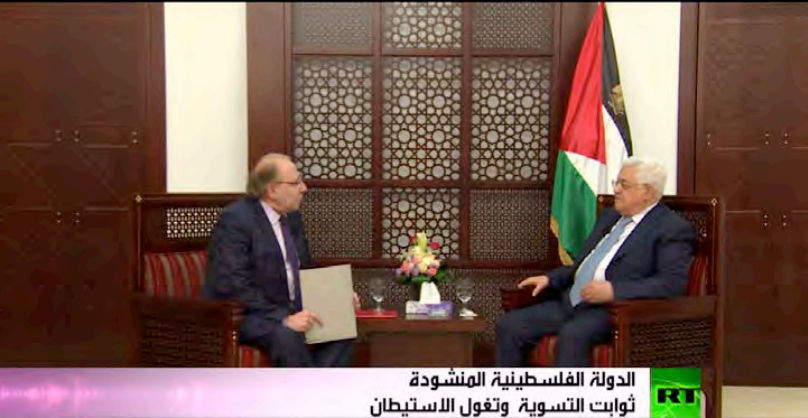



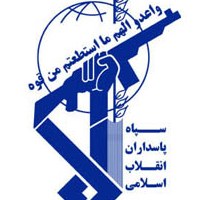
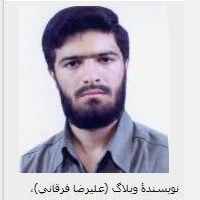
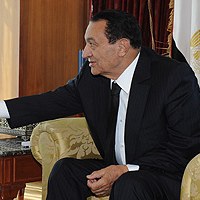
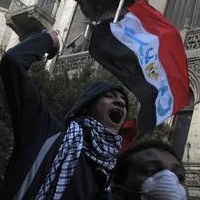




Latest Comments
Hello Mike, Thank you for your positive feedback to the article. I felt there wasn’t too much critical analysis of ...
Thanks for this considered and well constructed article. A follow up article on the manner in which the editorial contro...
THE CLUELESSNESS OF CLAIMING THAT OBAMA'S MIDDLE EAST POLICIES WERE A FAILURE CANNOT BE FURTHER FROM THE TRUTH, WHAT THE...
As long as Obama is the president of the usa do not trust the us government......
Thank you for an good read....